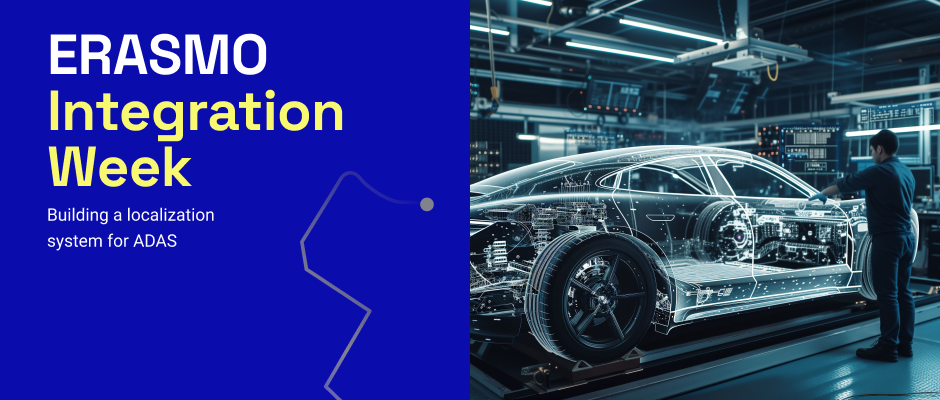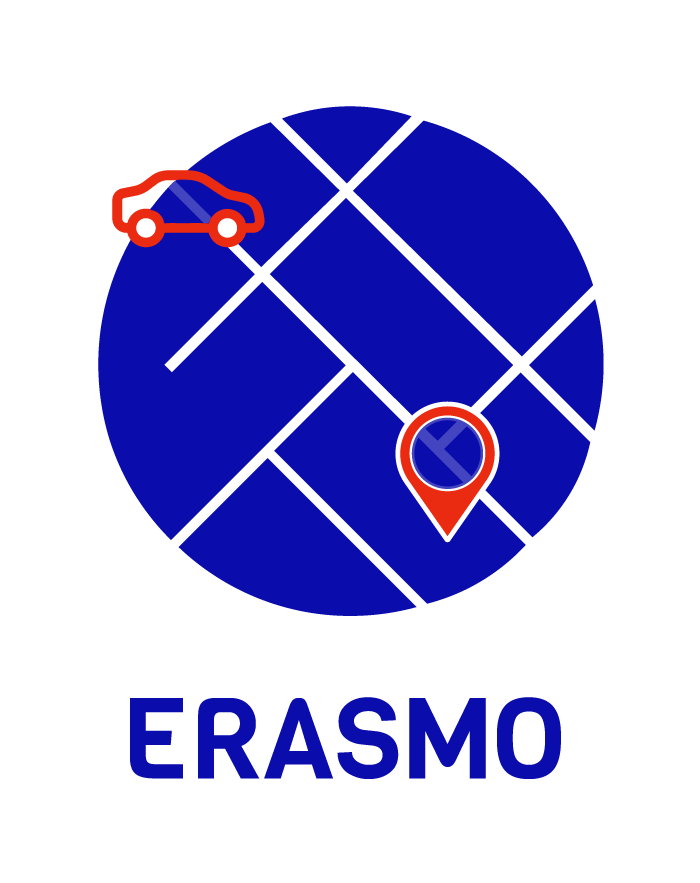
Over the past months, the ERASMO consortium has been building the separate components of an advanced localization system. In its final state, it will result in a vehicle on-board-unit (OBU). Each component has been rigorously tested and the individual functional performance for each element has been evaluated.
In January 2024, ERASMO integrated these components and carried out a range of tests to identify and rectify any bugs that could arise during integration. After many months of development, this is an exciting milestone for the project.
Background
The OBU is made up of multiple hardware elements, including a GNSS receiver. The GNSS receiver interfaces with the vehicle odometry and a connectivity gateway and allows us to generate with high accuracy a position output with its corresponding integrity layer. The main technologies we use are GNSS (Galileo, Europe’s global satellite-based navigation system), RFM (Road Features Map-matching, taking advantage of LiDAR), and Visual SLAM. They are combined as part of the Erasmo Localization System. Now that we are integrating them, we are in effect taking puzzle pieces, created separately, and building up the final image that corresponds to a localization system for use in vehicles with high levels of automation.
Key goals
The key goal that we worked toward during Integration Week was for all the components to function together so that we can finalize the hardware and software pipelines prior to field testing. In a practical sense, that means that all the hardware and software components can communicate with one another to deliver a single accurate positioning. To this aim, the ERASMO solution extracts road features, traffic markings, or signs, together with GNSS data in real-time. A secondary goal was to show the system’s positioning capability when vehicles navigate in urban canyons, bad weather, or heavy traffic.
Results
ERASMO aims to provide robust and trustworthy absolute position estimates that should contribute to the deployment and acceptance of vehicles with high levels of autonomy. When it comes to the results of our testing, most importantly every component of the OBU was connected, resulting in a functioning integrated unit. In other words, by the end of the week, and despite snowy weather, we had a fully functioning unit, and the main inputs and outputs were operational. Further, we were able to start testing the performances of other operating modes that benefit from the incorporation of RFM and Visual SLAM technologies. From here, we will accelerate the experimental part of the deployment and acquire the data needed for further analysis and optimization. While more work remains, the Integration Week was a crucial step in our OBU’s development: it helped us to identify the remaining hurdles we need to overcome.
Next Steps
In the coming weeks, we will continue to analyze the data we acquired and check the entire system’s performance. Importantly, this is just the beginning of our tests, substantial experimentation should follow. Future experiments should address differing driving conditions. For instance, we would carry out tests during daylight and at night, in traffic jams (which inhibit ground visibility), and in various weather scenarios. Stay tuned for results and future developments!


